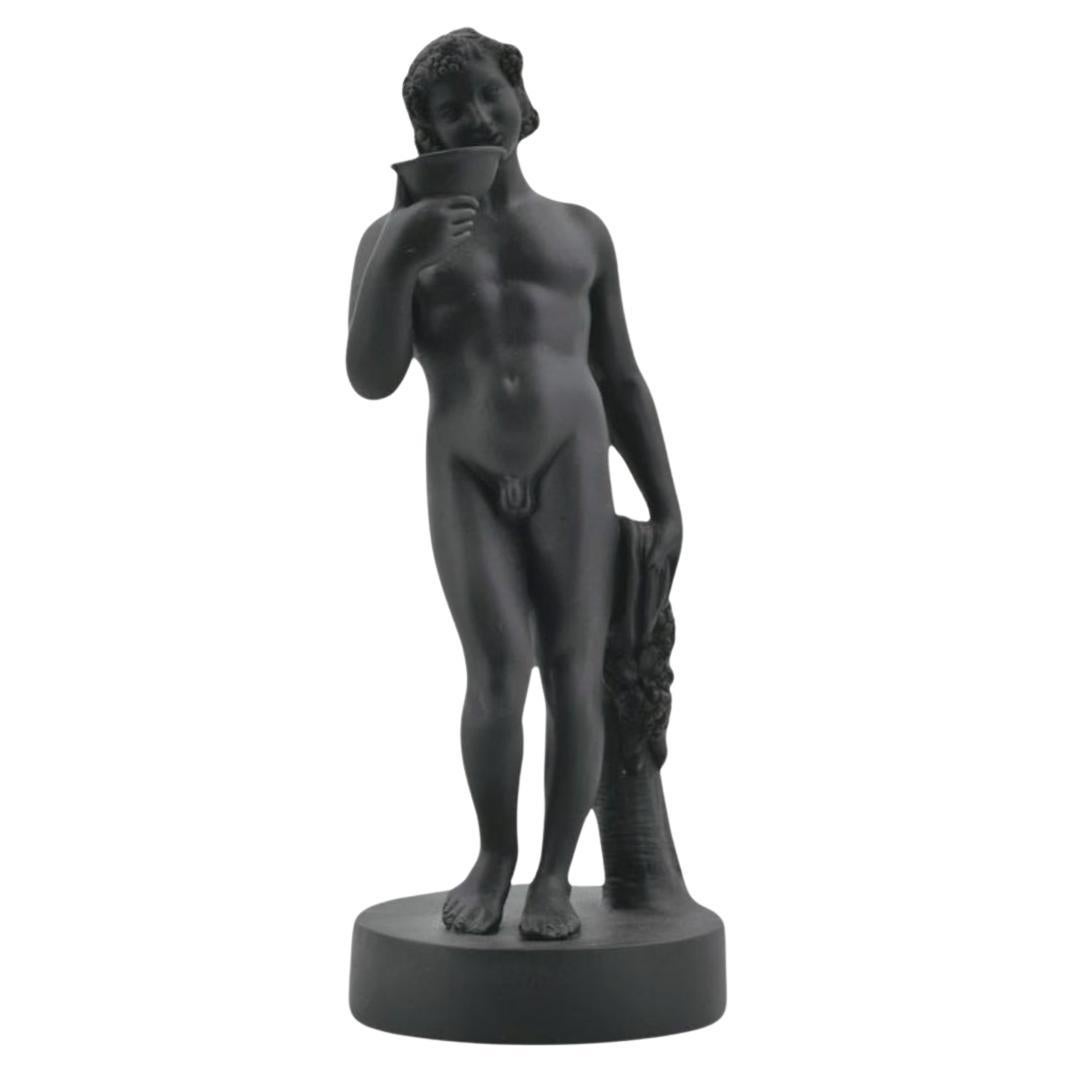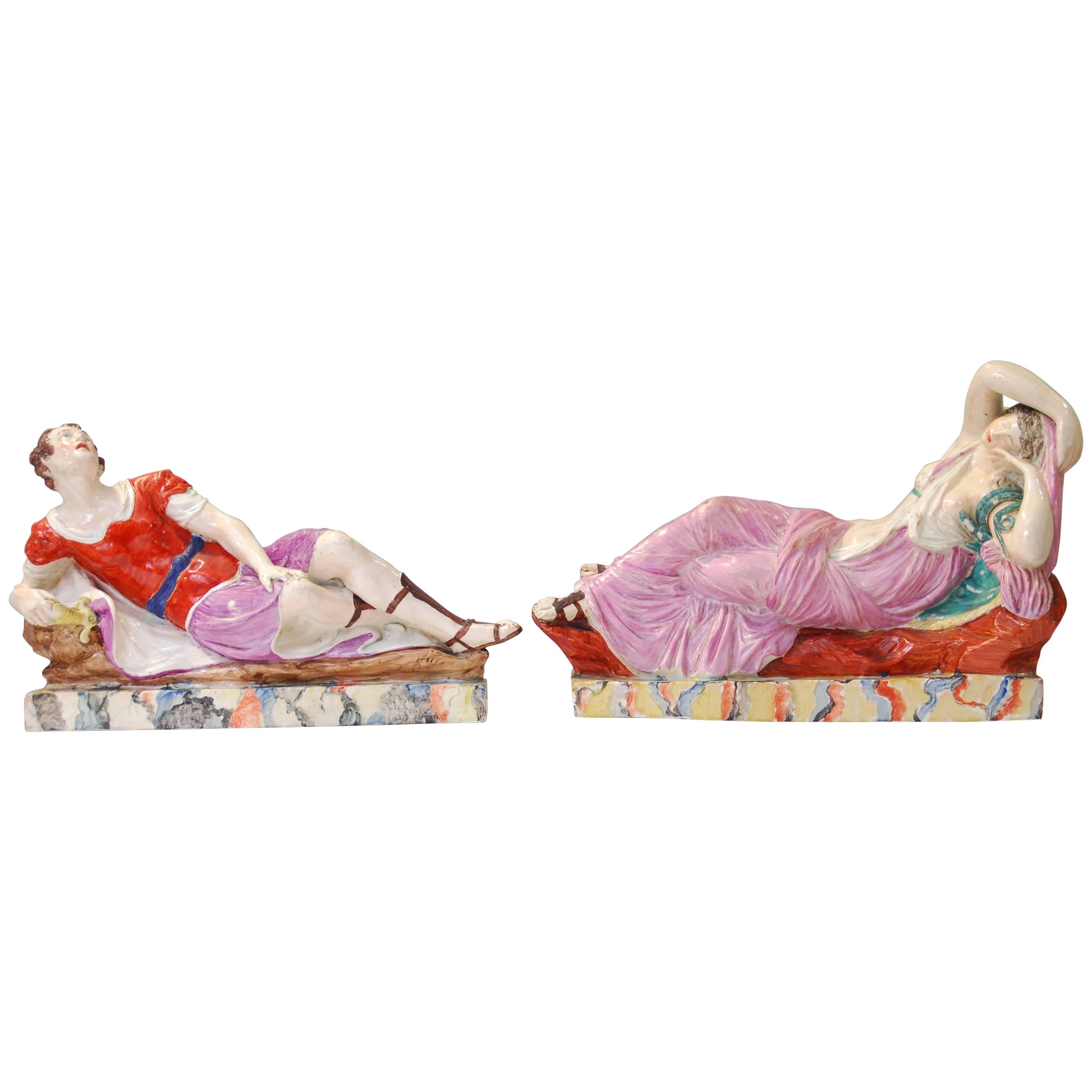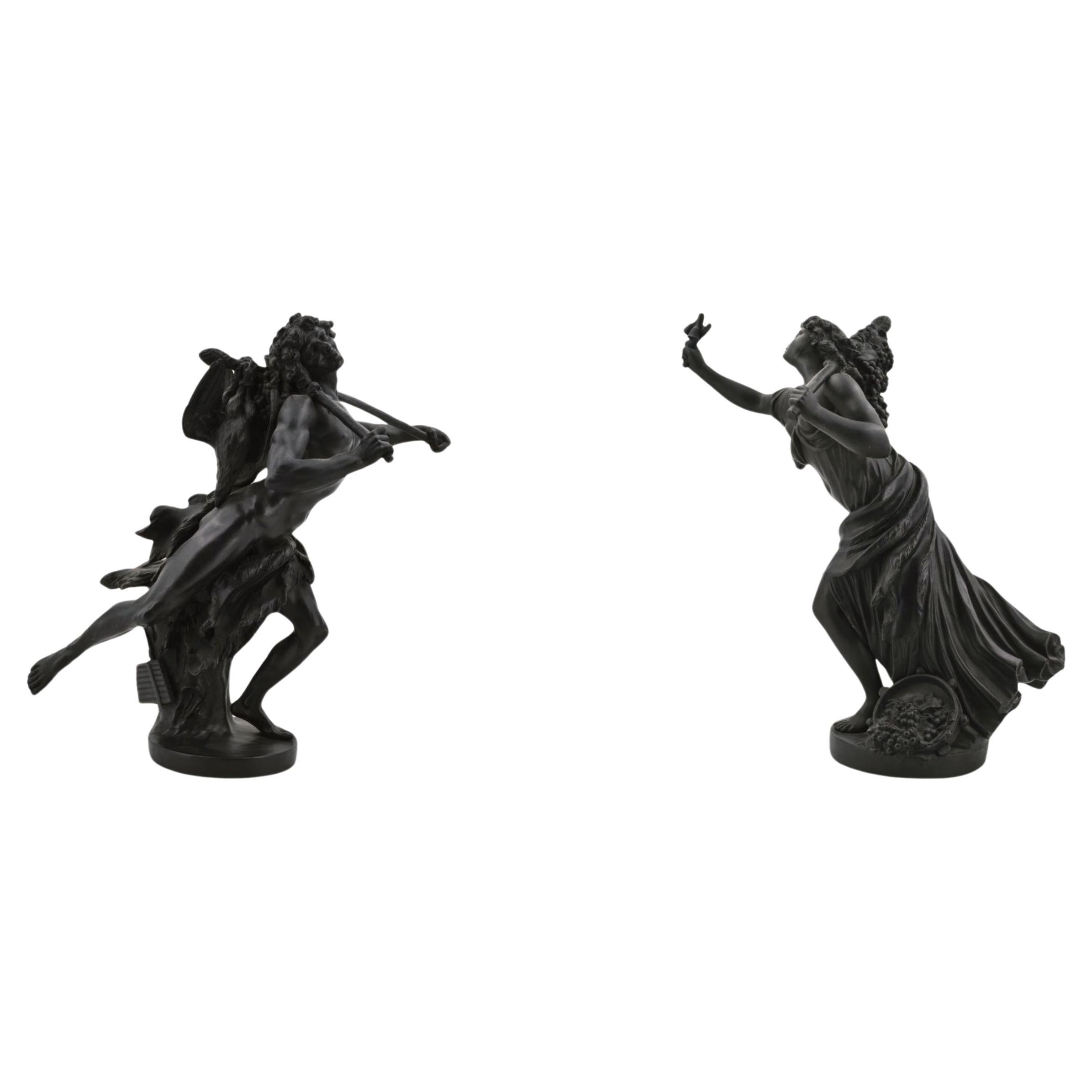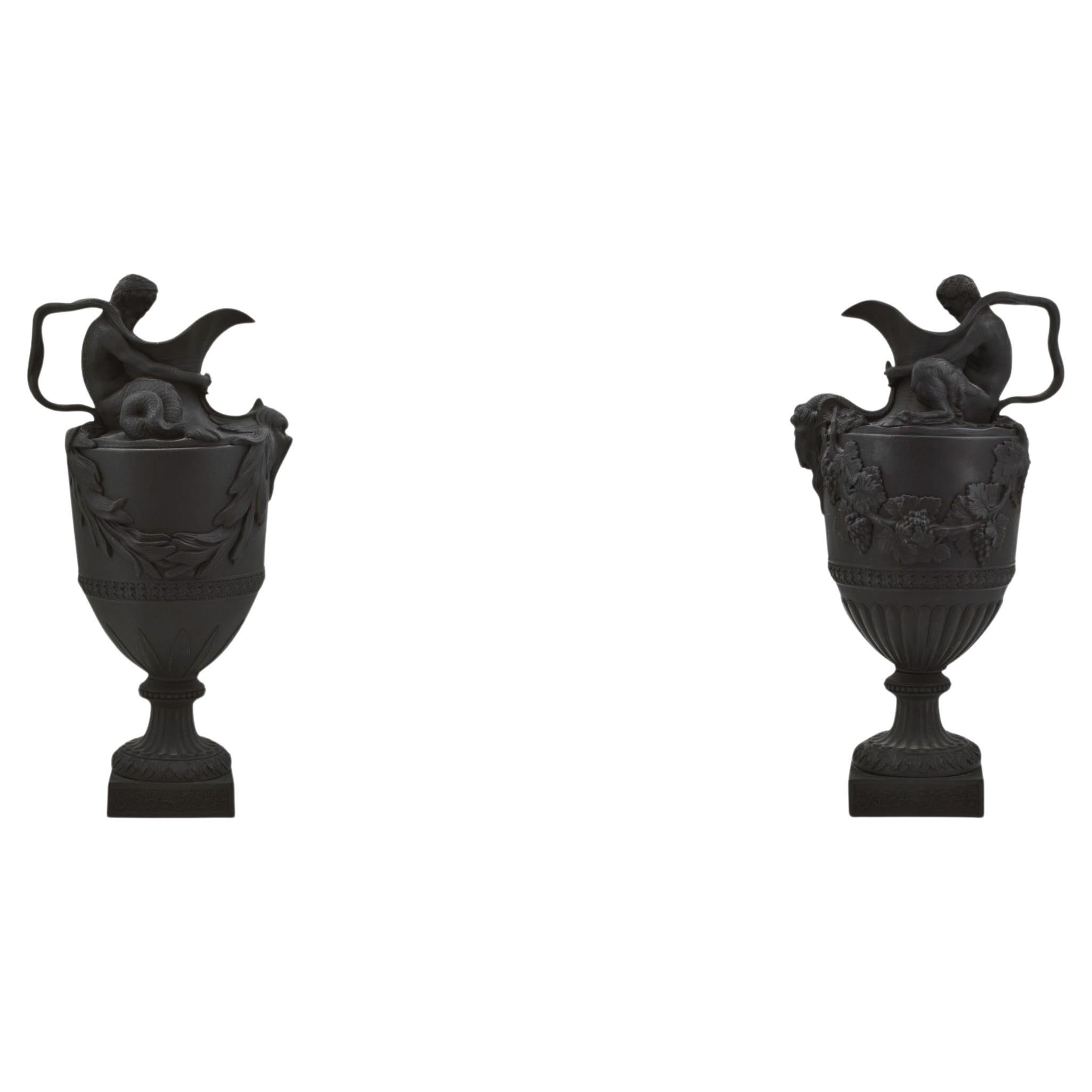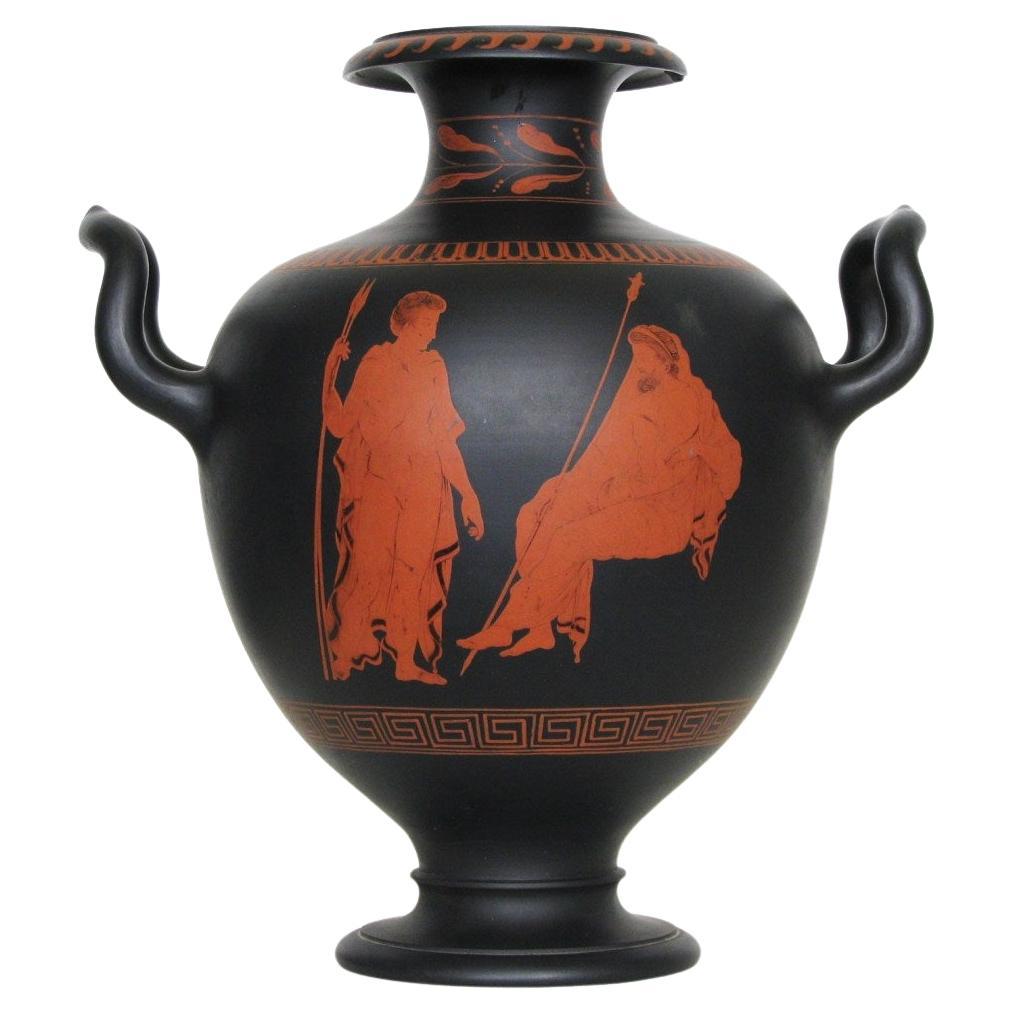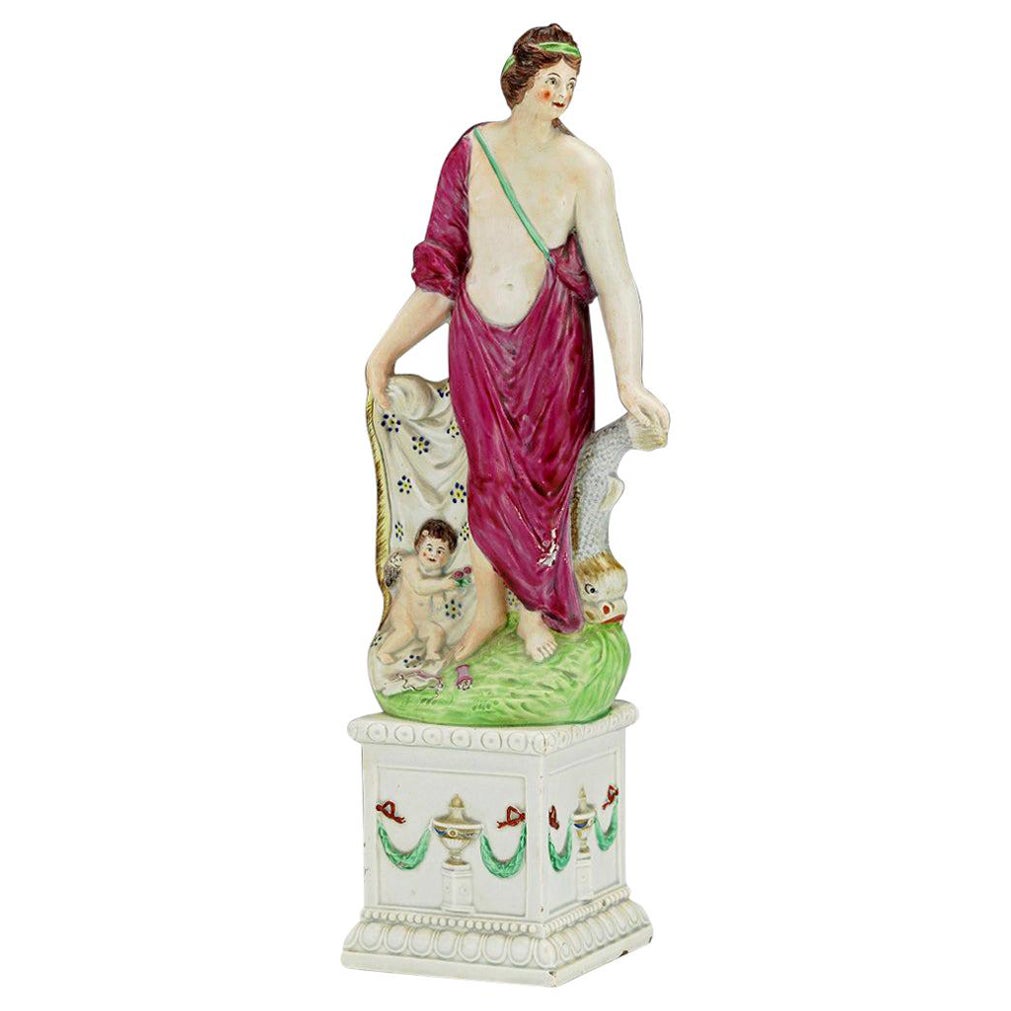Items Similar to Pair of Black Basalt Reclining Figures, Cleopatra and Lucretia, Neale circa 1780
Want more images or videos?
Request additional images or videos from the seller
1 of 16
Pair of Black Basalt Reclining Figures, Cleopatra and Lucretia, Neale circa 1780
About the Item
A fine, rare pair of figures in black basalt from the Neale Manufactory. The Neale pottery was founded in 1778 and ran until around 1792. They made very fine wares, and were on good terms with Wedgwood, with whom they combined shipments to the continent.
For two similar figures marked for Neale & Co. see Diana Edwards, Black Basalt, Wedgwood and Contemporary Manufacturers, Suffolk, 1994, p. 208, figs. 313 & 314.
Cleopatra and Lucretia are two women from different time periods and historical contexts, but are linked by their importance in Roman history, as well as by their tragic ends.
Cleopatra was a famous queen of ancient Egypt, who ruled from 51-30 BC. She was the last pharaoh of Egypt and is remembered for her intelligence, beauty, and political savvy. Cleopatra was involved in a romantic relationship with the Roman general and statesman, Julius Caesar, and later with the Roman general and politician, Mark Antony. Her relationships with these powerful Roman leaders played a significant role in the politics of the time and led to her eventual downfall. Cleopatra died in 30 BC, after her armies were defeated by the forces of Octavian (later Emperor Augustus) in the Battle of Actium.
Lucretia, on the other hand, was a legendary figure from ancient Roman history. She was said to be a virtuous and chaste wife who was raped by the son of the Roman king, Tarquin the Proud. According to legend, after the rape, Lucretia informed her father and husband of what had happened and then committed suicide in shame. Her death is said to have led to the overthrow of the Roman monarchy and the establishment of the Roman Republic.
Lucretia is remembered as a symbol of Roman virtue and purity, and her story has been retold in various forms throughout history, including in the works of the Roman historian Livy and the Renaissance artist Botticelli.
- Creator:Neale & Co. (Manufacturer)
- Dimensions:Height: 6 in (15.24 cm)Width: 10 in (25.4 cm)Depth: 3 in (7.62 cm)
- Sold As:Set of 2
- Style:Neoclassical (Of the Period)
- Materials and Techniques:Stoneware,Molded
- Place of Origin:
- Period:
- Date of Manufacture:circa 1780
- Condition:
- Seller Location:Melbourne, AU
- Reference Number:
About the Seller
5.0
Gold Seller
These expertly vetted sellers are highly rated and consistently exceed customer expectations.
Established in 2005
1stDibs seller since 2017
69 sales on 1stDibs
Typical response time: 5 hours
- ShippingRetrieving quote...Ships From: Melbourne, Australia
- Return PolicyA return for this item may be initiated within 14 days of delivery.
More From This SellerView All
- Black basalt figure of Bacchus. Wedgwood C1780.By WedgwoodLocated in Melbourne, VictoriaExceptionally rare early figure of Bacchus in black basalt. The mixed-case mark places this figure between 1780 and 1785. He is portrayed in typical style, his head garlanded with grapes and with a wine cup to his lips. Bacchus, also known as Dionysus in Greek mythology, is the enigmatic god of wine, fertility, and ritual madness. He symbolizes freedom, ecstasy, and the blurring of societal norms through his rituals and festivities. Bacchus is often depicted in myths as a deity who challenges the status quo, promoting an atmosphere where conventional rules do not apply, and his followers are liberated from their everyday constraints. Born from Zeus and the mortal Semele, Bacchus is unique among gods, bridging the divide between the divine and the human. His followers included the wild and ecstatic maenads, female devotees who often reached states of divine frenzy, and the satyrs, mischievous half-man, half-goat beings. The worship of Bacchus was marked by theatrical processions, dances, and plays, reflecting his patronage of the theater and the dramatic arts. Bacchus’s mythology...Category
Antique 1780s English Neoclassical Pottery
MaterialsStoneware
- Tragic Couple Antony and Cleopatra, Creamware, Ralph & Enoch Wood, circa 1780By Ralph Wood PotteryLocated in Melbourne, VictoriaCleopatra and Mark Antony, in enamelled creamware. After a model by Ralph and Enoch Wood, and quite likely made by this important partnership. The figur...Category
Antique Late 18th Century English Neoclassical Pottery
MaterialsCreamware
- Pair of Bacchantes in Black Basalt. Wedgwood C1860.By WedgwoodLocated in Melbourne, VictoriaPerhaps the most complex work in black basalt undertaken on any scale by Wedgwood, the Bacchantes, are adapted from sculptures by Clodion. A large and impressive pair, ful of vigour ...Category
Antique Mid-19th Century English Neoclassical Pottery
MaterialsStoneware
- Pair of Flaxman Ewers in Black Basalt. Wedgwood C1830.By WedgwoodLocated in Melbourne, VictoriaOne of the iconic early wedgwood pieces, the pair of ewers Sacred to Neptune & Sacred to Bacchus was designed by Flaxman in the 1780s for Josiah Wedgwood. They have remained popular ...Category
Antique Early 19th Century English Neoclassical Pottery
MaterialsStoneware
- Encaustic Painted Basalt Vase, Wedgwood, circa 1780By WedgwoodLocated in Melbourne, VictoriaA fine, large vase in black basalt, decorated with an encaustic painted figure of a youth and an older man, taken from The Hamilton vase in the British Museum. It is unusual to find ...Category
Antique Late 18th Century English Neoclassical Pottery
MaterialsStoneware
- Black Basalt Teapot, Turner, circa 1805By Turner PotteryLocated in Melbourne, VictoriaA fine teapot with D-shape handle and a peculiar finial in the form of a widow without her barrel & cruze. The finial confirms the Turner attribution.Category
Antique Late 18th Century English Neoclassical Pottery
MaterialsStoneware
You May Also Like
- Pearlware Figure of Aphrodite & Eros, 'Venus and Cupid' Figure, circa 1790By Neale & Co.Located in Downingtown, PAGreat Pearlware Figure of Aphrodite & Eros, 'Venus and Cupid' Figure attributed to Neale & Co, circa 1790. The large pearlware early English pearl...Category
Antique Late 18th Century English Georgian Pottery
MaterialsPottery, Pearlware
- Puce-Colored Creamware Shell-Edge Neale and Co Set of Ten PlatesBy Neale & Co.Located in Downingtown, PAThe Neale & Co. puce-colored shell-edge plates are each decorated in a purple transfer with figures in the foreground amongst a landscape of Classic ruins. The rims, also with a feathered puce (purple) border, are highlighted with unusually strong remnants of the original gilding. Each is impressed with the Neale & Co. mark on the reverse. Marks: The impressed Neale & Co. mark was only used between 1778 and 1795. Reference: Neale Pottery & Porcelain: Its Predecessors and Successors 1763-1820, Diana Edwards, page 126, #100 for a large stand...Category
Antique Late 18th Century English Georgian Dinner Plates
MaterialsCreamware
- Pair of English Majolica Parrot Figures by MintonsBy MintonLocated in West Palm Beach, FLPair of English Majolica parrot figures by Mintons, each one with colorful feathers, resting on a perch.Category
Early 20th Century English High Victorian Pottery
MaterialsMajolica
- Creamware Oval Botanical Dishes, Neale & Co. 18th-CenturyLocated in Downingtown, PACreamware English pottery pair of botanical 18th-century dishes, Neale Pottery. The oval dishes are a rich creamy color painted in the interior with a rose stem with an open rose...Category
Antique Late 18th Century English Georgian Pottery
MaterialsCreamware
- 19th Century Pair of Polish/German Stoneware FiguresLocated in Dallas, TXPresenting a lovely 19th century pair of Polish/German stoneware figures. Quite rare! Not a matching pair but similarly themed, with the little girl holding a basket of kittens with one kitten climbing up her front and the other of a little boy climbing a tree stump with a snail at the base. The ‘Little Girl’ is painted stoneware or earthenware and we are of the opinion is Polish in origin (or possibly Russian). It does not have any identifiable markings but it was originally with another similar style figurine (not included in this sale) which had markings that we were of the opinion were Polish markings. The ‘Little Boy’ is painted pottery and we are of the opinion that it is either Polish or German in origin. It is slightly different in style an texture to the girl and has a more ‘bisque’ finish. The facial features are more defined and remind me of German bisque dolls...Category
Antique Late 19th Century Polish High Victorian Figurative Sculptures
MaterialsPottery
- 18th Century Shell-Edge Creamware Sauce Tureen Puce-Decorated by Neale & Co.Located in Downingtown, PAThe large 18th century Neale & Co. creamware sauce tureen, cover, stand and ladle are each decorated in puce transfer with figures amongst classical ruins. The rims also with a painted shell-edge puce border highlighted with the strong remnants of original gilding. Dimensions: 7 inches high x 10 1/2 inches wide x 7 1/4 inches; The under dish...Category
Antique Late 18th Century English Georgian Pottery
MaterialsPottery, Creamware
